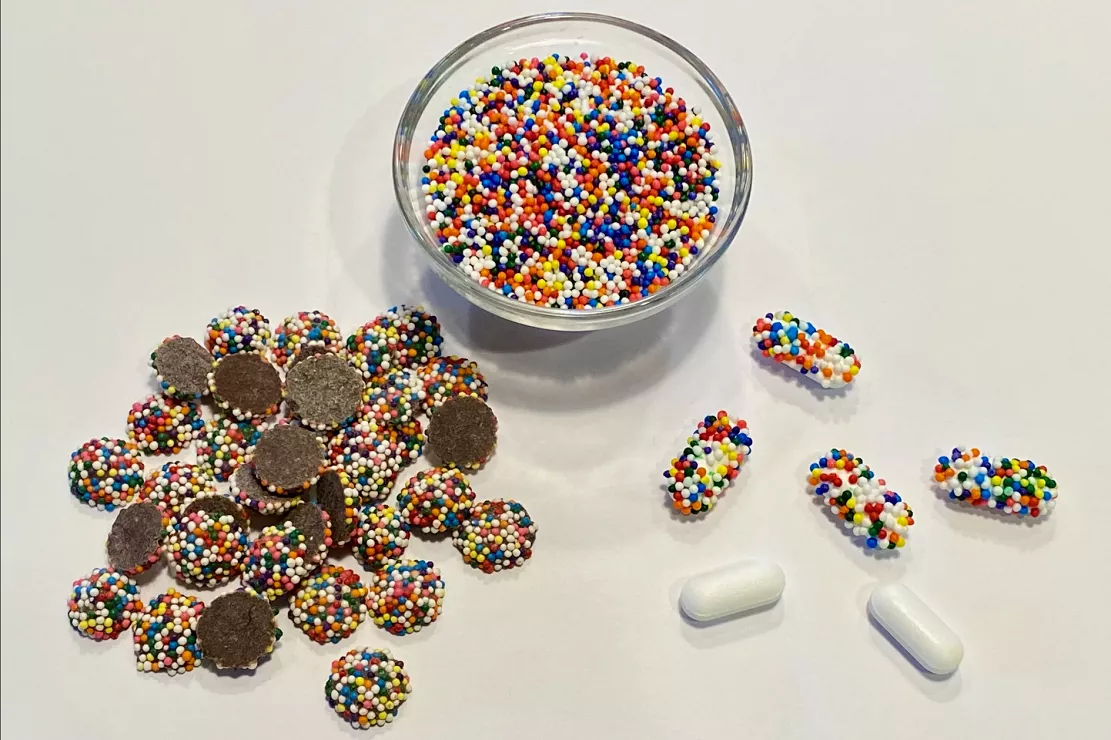Sugar pellet decorations may make desserts more interesting, but an American scientist has developed applications that may be more valuable to them. His candycode system may one day be used to confirm that so-called real drugs are not actually fake drugs.

Although we have heard of some drug anti-counterfeiting measures, many of the proposed technologies involve quite complex processes, some of which actually need to change drugs. To this end, Professor William Grover from the University of California Riverside set out to develop something simpler but equally effective - candycode is the result.
The system consists of applying a food grade adhesive to a single pill and then sprinkling a variety of random multicolor sugar beads on the pills. Then each pill is photographed and its image data is stored in a database.
When consumers then want to check whether their drugs are real, they first take a picture of one of the pills with their smartphone. Then they need to visit an online portal where they can compare the photos with the image data on the drug company's server. If they find a match with the specific color combination and spray pattern of the tablet, consumers will be told that the tablet is genuine - but if they don't find a match, they will be warned that it is likely to be a fake.
Of course, it sounds like taking the first photos will be a lot of work, and storing these photos also requires a lot of memory. However, Grover points out that many pharmaceutical companies have used quality control systems, and each pill is imaged as it passes on the conveyor belt.
In addition, he pointed out that if the scattering pattern of each pill was stored as a set of text-based strings -- rather than the original photo file -- in theory, a company could produce 41 million pills for everyone on earth, but still identify each of them.
In testing this concept, Grover took a total of 120 photos sprinkled with chocolate candy, 12 in each group. There are an average of 92 pond beads on each candy, with a total of 8 randomly mixed colors.
The image information is stored in a database, in which the falling pattern of each candy is converted into a text string. Even after the candy was knocked to simulate the strict requirements of transportation and processing, it was found that the subsequent candy photos could easily match the strings in the database.
More importantly, Grover also found an additional benefit of the candycode system when experimenting with spreading pond beads on Tylenol tablets. "Based on experience, I found that candycoded tablets are easier to swallow than ordinary tablets, which confirms Mary Poppins's classic observation on the relationship between sugar and drugs."
It is reported that the research report has been published in scientific reports.